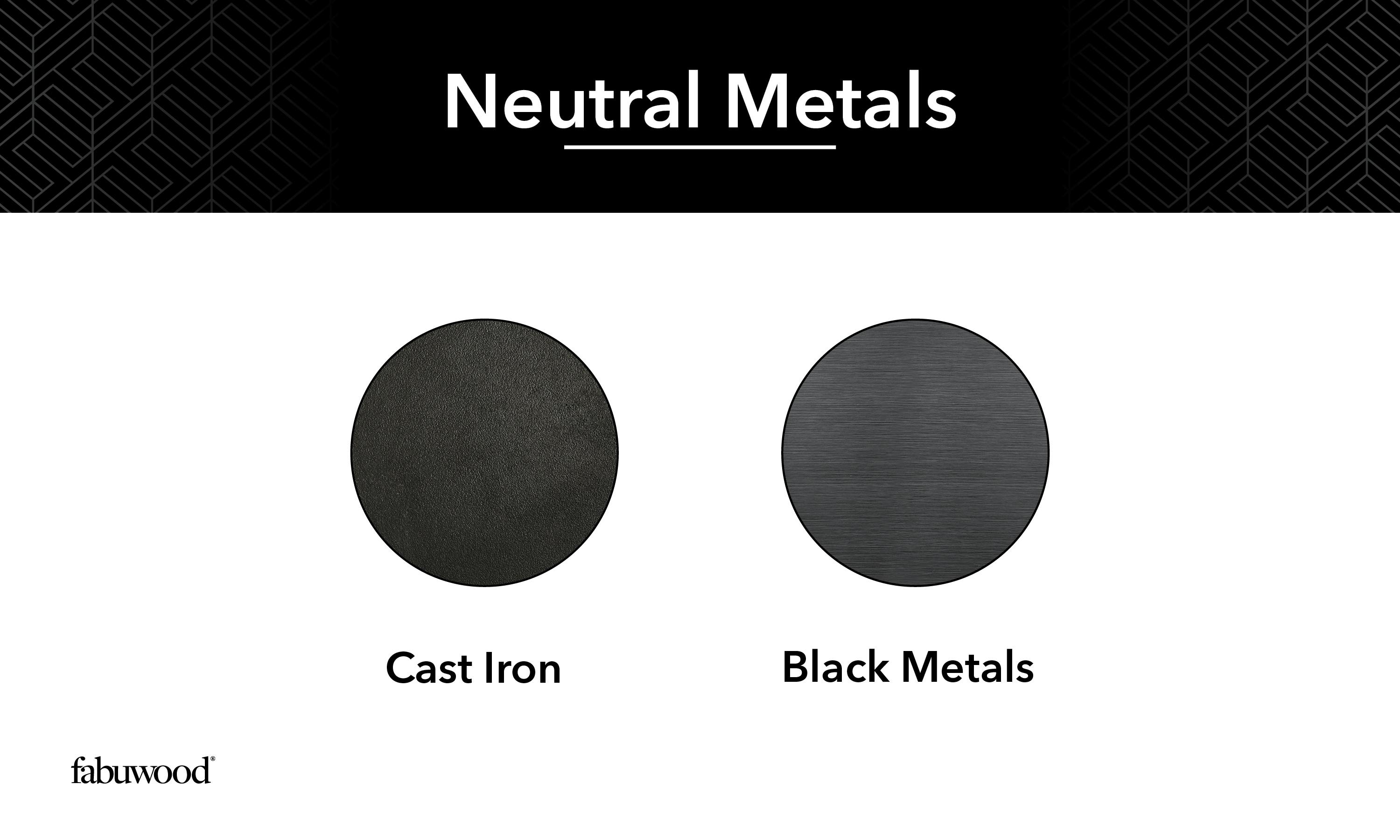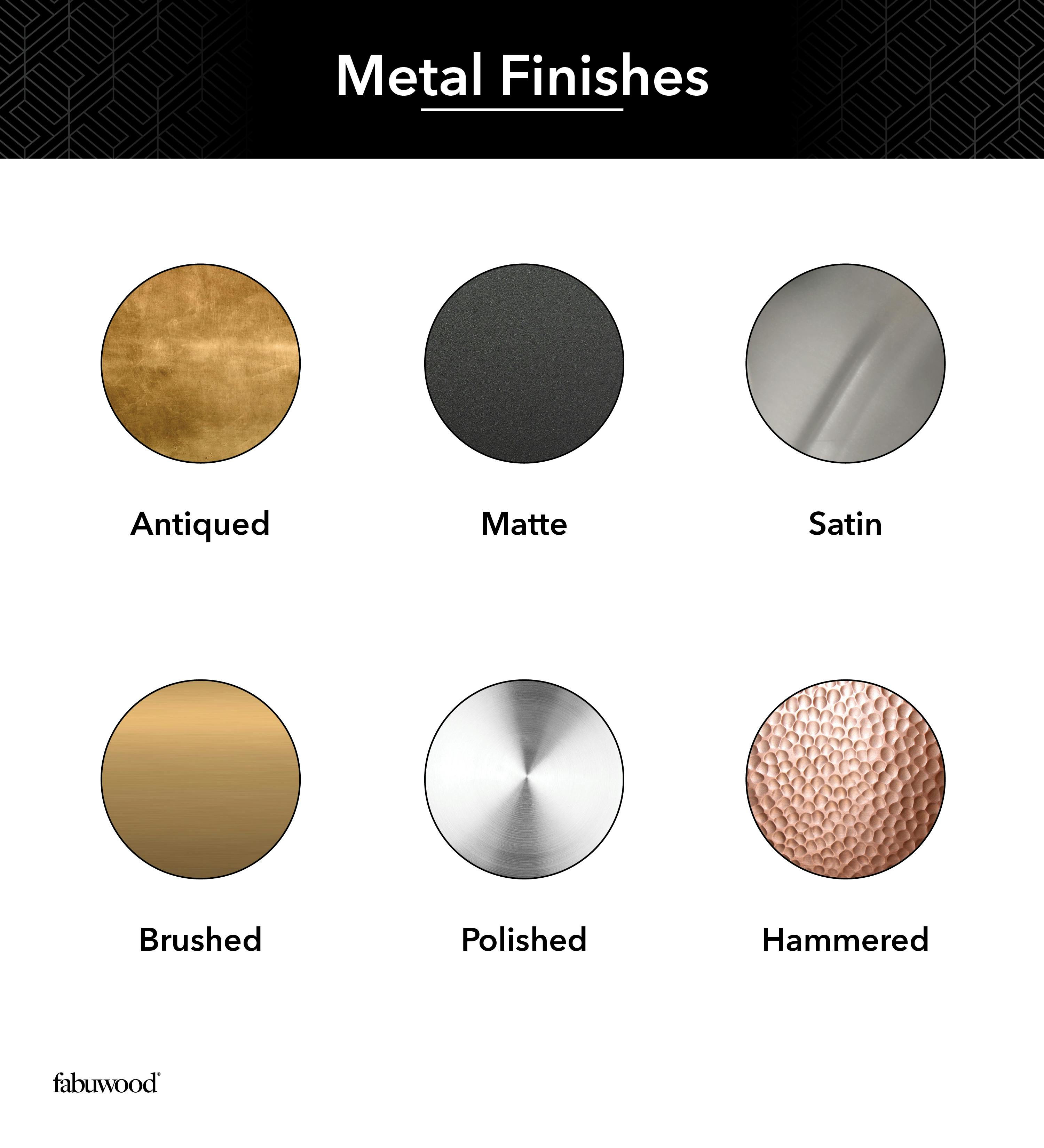Mixing Metals in the Kitchen
Mixing metals can transform your kitchen into a stylish, eye-catching centerpiece of your home. The secret lies in balancing contrasting metals to achieve a harmonious and cohesive aesthetic. Choosing a primary metal, balancing with secondary metals, and choosing metals and finishes that pair well together are essential to mixing metals.
You can craft a beautifully designed kitchen by following these expert tips and understanding the principles behind combining different types of metals.
The Four Essential Rules for Mixing Metals
There are four essential rules to follow when mixing metals in the kitchen. Each rule builds upon the last, creating a blueprint for a cohesive and balanced mixed metal design.
Pick a Dominant Metal
Consider the existing color scheme in your kitchen to establish the foundational metal in your space. This dominant metal will guide your secondary metal picks and help you decide which colors and finishes to go with for your metals.
Use the dominant metal for about 60-70% of the metal finishes in the kitchen. Distribute the metals evenly throughout the kitchen. Avoid clustering one type of metal in one area and another kind in a different area. This helps maintain a balanced and cohesive look.
Here’s a quick guide to metals and finishes to help you decide which to choose as your dominant metal:
Warm Metals

Cool Metals

Neutral Metals

Metal Finishes

- Antiqued – looks weathered and works well with rustic décor.
- Matte – has a soft and subtle texture without the shine of polished metal and works well with many décor styles.
- Satin – in between matte and polished and works well with traditional spaces.
- Brushed – very smooth finish and works well with glamorous spaces.
- Polished – is reflective and works well in modern spaces.
- Hammered – looks like it's been pounded by a small hammer and goes well with rustic décor.
Common dominant metals are stainless steel or any black, which is considered a neutral metal. Use the dominant metal for larger fixtures throughout the kitchen, like appliances, lighting, and faucets.
Balance With a Secondary Metal
Now, it's time to choose your second and third metals to balance out the kitchen. The secondary metals should contrast nicely with the dominant ones to create visual interest. Stick to three metals at the most so your kitchen doesn’t appear messy or incohesive.
Metals can be used to define different functional spaces in the kitchen. You can create zones by using one type of metal finish for all items of the same function, such as having all faucets in stainless steel and the kitchen island stools and knobs/pulls in a complementary metal like brushed nickel or matte black.
Choose Metals That Pair Well Together
The key to choosing your secondary metals is to pick ones that complement your dominant choice. This means selecting metals in the same color family. Stick with warm-toned metals if you want a warm and cozy feel, or cool-toned metals for a more modern look.
You can also mix warm and cool-toned metals for a rich pop of color and texture.
Pick Metals That are Similar to Other Colors in the Kitchen
Consider your cabinet color or finish, countertops, and paint color in your kitchen. This will help you go with either warm or cool-toned metals. For example, if you have a Galaxy Frost white kitchen, you have the versatility to choose from a variety of metals and finishes like polished chrome or oil-rubbed bronze for the faucets, knobs and pulls, and light fixtures.
If you have a Luna Indigo kitchen, brass and gold look beautiful with the rich hue. Let your cabinet, counter, and kitchen color guide your choice of metals for a stunning mixed metal aesthetic.
Vary the Metal Finish
Mix up the metallic finishes for an even more visually appealing kitchen. For the most impact, use matte, polished, and hammered finishes, among other finishes.
For example, satin gold can be used for the faucet and backsplash tiles and brushed black for the cabinet hardware and light fixtures. The satin gold’s smooth, slightly shiny finish pairs well with the subtle, muted texture of the brushed black.
Another way to vary the finish is with hammered copper and polished nickel: Opt for hammered copper for the sink or range hood and polished nickel for faucets and cabinet knobs. The hammered texture of the copper adds rustic charm and depth, while the polished nickel introduces a clean, shiny element.
Tips for Mixing Metals
- View your metals in both natural and artificial light to ensure they’ll always look good together, no matter what lighting they’re in.
- Stick to two or three metals in the kitchen. Any more, and the space will appear too busy and tacky.
- When matching metals, purchasing all elements from the same manufacturer can ensure consistency in the finish, as different manufacturers may have slight variations in the same finish type.
- Metals like stainless steel, chrome, or iron can act as neutral elements that ground the design and tie other metals together.
- Ensure each metal finish is repeated at least twice in the space. This repetition creates a cohesive look and prevents any one finish from looking out of place.
- Use smaller accent pieces to introduce a new metal finish without overwhelming the space. For example, a single brass light fixture can add warmth without clashing with other finishes.
- Browse design magazines, websites, and social media for inspiration on mixing metals. Seeing how others have successfully combined different finishes can provide ideas for your kitchen.
Mixing metals is like mixing patterns—it requires careful consideration and thoughtful planning. What used to be considered a design faux pas is now seen as a sophisticated choice in home design. It’s all about finding the right balance that reflects your style and enhances your space.
Reach out to your local dealer to start your mixed metal kitchen design.
FAQS
- Why do people mix metals in the kitchen?
- People usually think they can only use one type of metal. Mixing metals brings more visual interest and style to the kitchen while still creating a timeless look.
- What are the rules for mixing metals?
- Don’t mix metals of the same tone. For example, don’t mix brushed nickel and steel – these are very similar in tone and won’t look good together. Also, don’t mix brands of the same metal; stick with one brand since every manufacturer has their own version of the metal. Finally, stick to three mixed metals at the most in your kitchen so it can still look cohesive and well thought out.
- Can I mix gold and silver in kitchen design?
- Yes. What used to be thought of as an unfortunate design choice, mixing gold and silver hardware and finishes is a bold and visually interesting design choice.
- Which mixed metals look good together?
- Try matte black and brass, polished nickel and brass, brass and gold, brass and stainless steel.
